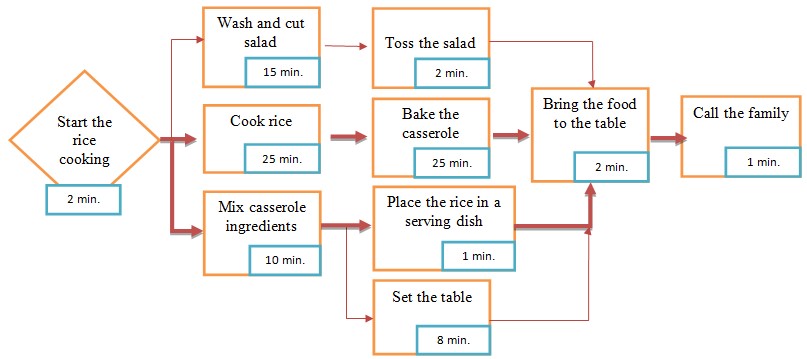To determine the shortest time for dinner preparation, it is essential to analyze the current tasks and clarify whether some of the assignments could be completed together. This approach could be especially advantageous for preserving time and maintaining a higher level of efficiency. The Program Evaluation Review Technique (PERT) is a beneficial method for examining the necessary activities and establishing the time frames required to complete a specific process (Evdokimov et al., 2018). Ten steps must be finished for the family dinner preparation task, with each stage necessitating from 1 to 25 minutes; however, as some of the actions can be conducted simultaneously, it is possible to reduce the required amount of time. The PERT chart for the dinner preparation activity is presented in Fig. 1; the critical path is highlighted in bold red.

Following the PERT chart, it is possible to create the most efficient process allocation for preparing the family dinner. The final design is presented in table 1. As such, starting the rice cooking, washing and cutting salad, mixing casserole ingredients, and setting the table are the four tasks integral for the continuation to the following stages. However, after the rice cooking has been started, the cook may begin other activities, as the rice cooking timeframe is significantly large. Therefore, while the rice is cooking, the salad will be washed and cut, and the casserole ingredients will be mixed. After that, while the casserole is cooking, the rice will be placed in the serving dish, the table will be set, and the salad will be tossed. Finally, the food is to be brought to the table, and the family is to be called, resulting in a 55-minute total time.
Table 1. Dinner preparation process.
Reference List
Evdokimov, I.V. et al. (2018) ‘Using PERT and Gantt charts for planning software projects on the basis of distributed digital ecosystems’, Journal of Physics: Conference Series, 1074. Web.